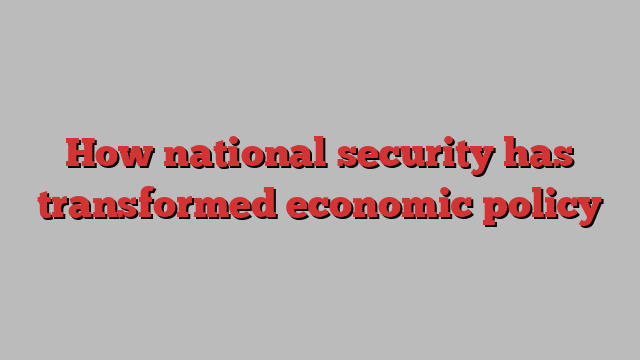
The White House is currently finalising the details of President Joe Biden’s latest exercise in economic sparring with Beijing: a planned 25 per cent tariff on imports of the Chinese cranes which dominate the container-unloading business at American ports.
On the surface, the tariffs have a conventional rationale — Biden hopes that, over time, the measures could help bring crane-building back to the US and boost the country’s manufacturing base.
But the measures also reflect the way national security concerns have intruded into economic policy. US officials have fretted that China could employ the hulking cranes to conduct espionage at US ports, for example by using their sophisticated logistics software to monitor military-related shipments.
The crane tariffs are a window into a seismic change in America’s economic thinking that seems likely to be reinforced after the election in November — with dramatic implications for the future of the global economy.
The new economic nationalism
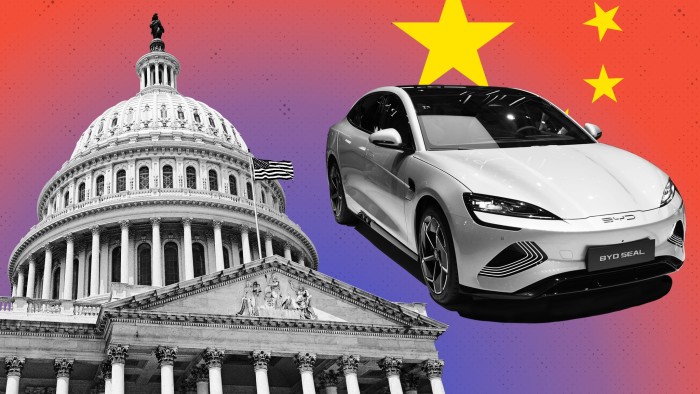
This is the first in a series on what the growing prominence of industrial policy and tariffs means for the global economy
Part 1: The advance of national security into the US economy
Part 2: How Chinese companies are using third countries to get around US rules
Part 3: Is the global economy really fracturing?
Over the past decade, there has been a much greater willingness to use tariffs as part of industrial and trade policy. Under Biden, there has also been a parallel emphasis on employing subsidies and other forms of state intervention to boost investment in key sectors.
This process is being turbocharged by the way that security issues are becoming entrenched in US government thinking about large segments of the economy, from manufacturing to new technologies.
The growing intersection of economic policy and national security has many roots. It accelerated after 9/11 and the war on terror; with the Covid pandemic, which snarled supply chains; and with Russia’s belligerence and invasion of Ukraine.
But the biggest factor has been China. US officials have watched with awe and trepidation at the advances of Chinese state capitalism in many of the industries that are likely to dominate the first half of this century. Retaining and restoring American manufacturing competitiveness has come to be seen as a defining geopolitical challenge.
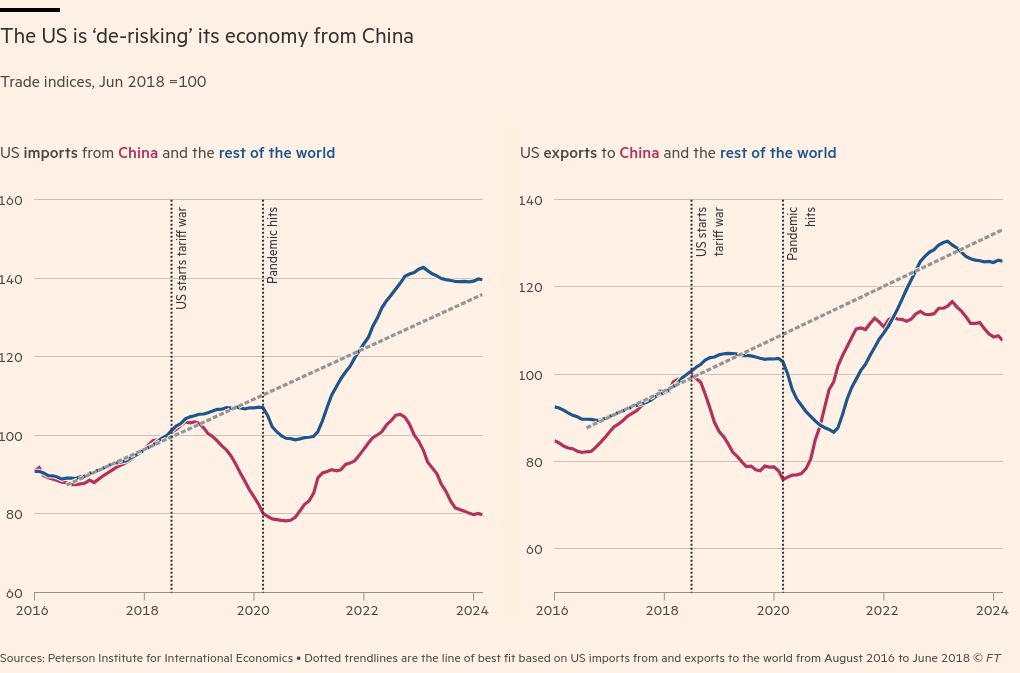
At the same time, officials have become increasingly alarmed at the number of products and technologies that they fear could have a parallel use in the military sphere or be used as espionage tools.
The result is a mindset where economic priorities and national security concerns become fused in a way that is unrecognisable from the more free market approach that took hold at the end of the cold war.
“The trend is everything is a national security issue,” says Daniel Drezner, professor of international politics at Tufts University.
The cranes decision is a case in point. After identifying the potential risks from using Chinese port cranes, White House staffers sketched out a strategy to get investment from manufacturers from US allies, first Japan and later Finland. It is the “kind of thing that can be replicated across a number of different areas where there are core national security concerns,” says a US official.
In an interview with the Financial Times, US national security adviser Jake Sullivan said the US was not the only country that was increasingly linking economic and national security.
“The role of national security in trade and investment policy and strategy is rising everywhere,” Sullivan adds. “There are changes in the way that people are approaching the question of trade policy, international economic policy and that’s true in market economies the world over.”
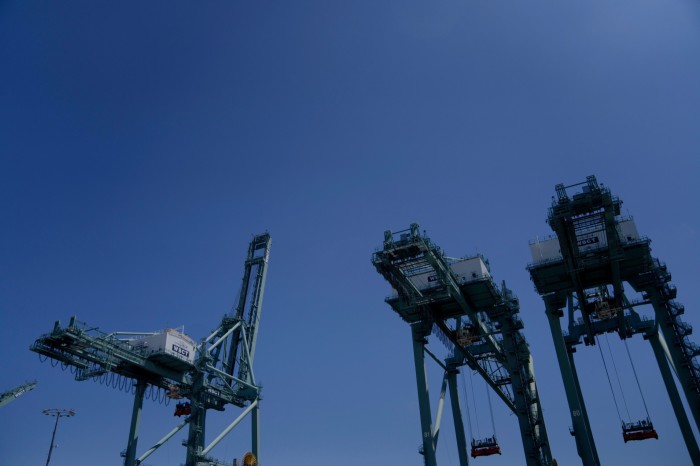
For some observers, the administration’s new approach will spur greater economic competitiveness.
“The Biden team has created a playbook here that other countries are likely to follow,” says Ryan Mulholland, a former White House official who is senior fellow for international economic policy at the Center for American Progress think-tank. “The US has been pretty successful in coupling real investments in our manufacturing base with some more defensive strategies such as tariffs and export controls.”
But the shift in US policy has huge implications for the rest of the world — not just with rivals such as China but also with close allies, many of whom worry that Washington is pulling back from its role as a trustworthy anchor of the global economy.
As the presidential election looms, America’s allies are braced for a further intensification of these policies, regardless of the winner. The US appears set on a strategy driven by a combination of China-related security considerations and economic nationalism that will further shake up relations with partners in Europe and the Indo-Pacific.
“There is no set of norms, rules or institutions to guide these interventions, now that we have blown open the barn doors using national security justification,” says Emily Kilcrease, a former US official who is a trade and security expert at CNAS, a think-tank. “There is a real risk of calling everything national security and using it to justify doing whatever you want.”
Donald Trump’s departure from office in 2021 was greeted with widespread relief among US allies. Many believed that the Biden administration would take a less abrasive approach on everything from trade to China.
In Brussels, a European Commission plan called Biden’s arrival a “once in a generation” opportunity to revitalise the transatlantic partnership. Such were the expectations that some Japanese officials even fretted that Biden would be too soft towards China.
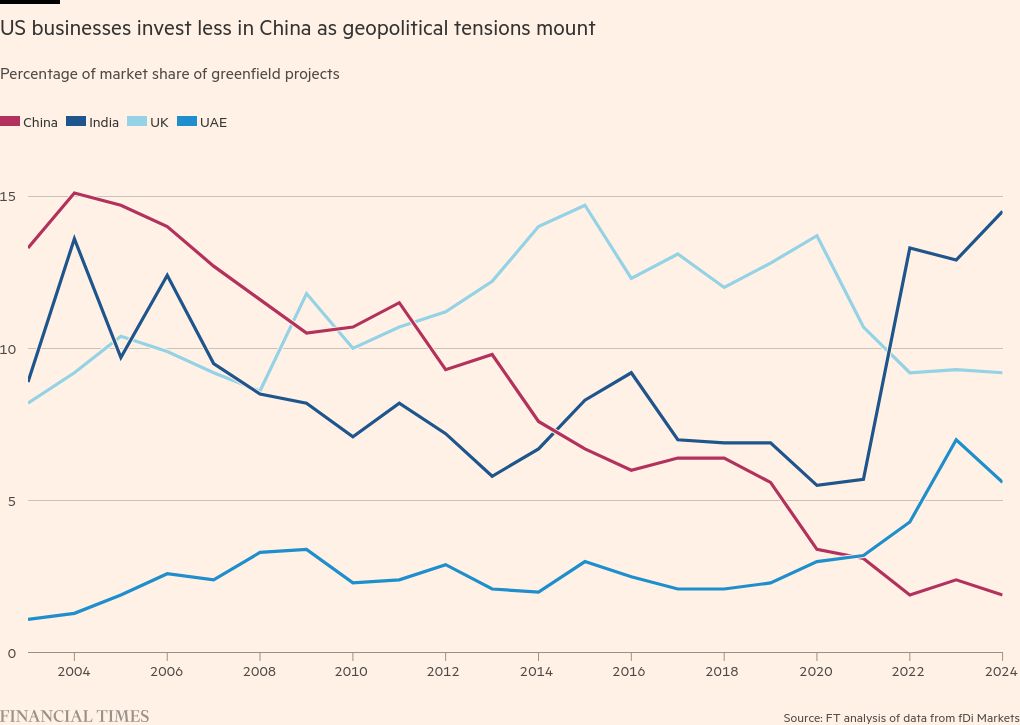
The reality has proven very different. Over the past three years, Biden has gone much further than Trump in linking economic security to national security in ways that have complicated policy for allies from Berlin and The Hague to Tokyo and Seoul.
Many of these measures have been designed to slow China’s military modernisation and tackle what Washington says is Beijing’s unfair industrial policy, especially subsidies for domestic industry. But even when allies agree with the goal of countering China, they see the spectre of protectionism lurking beneath the surface.
The Inflation Reduction Act, a sweeping 2022 law designed to cut carbon emissions and spur the US domestic clean energy industry, won plaudits for addressing the climate crisis, but also triggered fury within the EU because of its incentives to produce in the US.
Last May, Biden imposed 100 per cent tariffs on imports of Chinese electric vehicles. The move was an attempt to provide space for the domestic green economy to develop, but was also driven by security concerns about China gaining access to data from onboard computers.
The president’s ongoing opposition to Nippon Steel’s proposed $14.9bn acquisition of Pittsburgh-based US Steel — which vice-president Kamala Harris is expected to continue if she wins — was taken in the name of national security. The move angered Japan, which is the most important US ally in the Indo-Pacific as it works to counter China in the region.
In a speech in April 2023 outlining the rationale for a new Washington consensus, Sullivan listed four challenges facing the US that have dictated the shift in economic policy. These included the hollowing out of the US industrial base, the need to develop global public goods like clean energy where markets are inefficient, and tackling economic inequality partially sparked by trade. The fourth was “adapting to a new environment defined by geopolitical and security competition, with important economic impacts” — which was mainly focused on China.
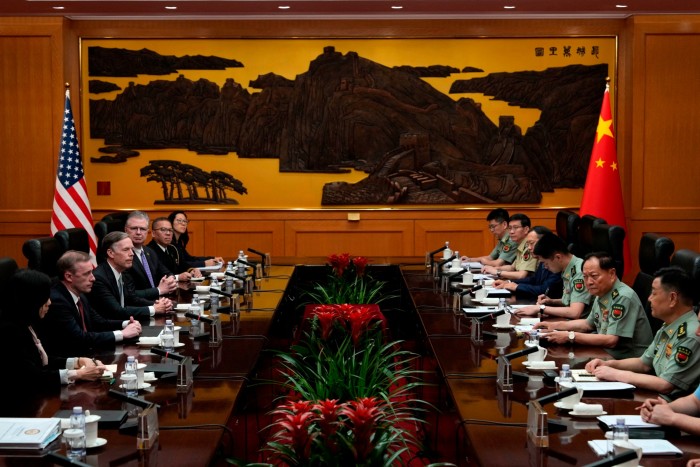
The Biden administration insists that the new approach is not upending the international trading system and that the new use of industrial policy has been designed with the co-operation of key allies. “It’s not throwing the baby out with the bath water,” says the US official.
One of Biden’s highest-profile moves was the introduction of sweeping chip export controls in October 2022, which were expanded a year later. Officials say the moves have been carefully designed to focus only on the most advanced chips.
As part of the strategy, the US reached an agreement with Japan and the Netherlands after complex, long-running negotiations to make it harder for China to obtain machine tools to make advanced semiconductors.
In an effort to pressure Tokyo and The Hague to go even further, the Biden team several months ago warned about the possibility of using an extraterritorial measure known as the “Foreign Direct Product Rule”. The rule allows the US commerce department to prohibit foreign companies from exporting products that contain American technology.
The threat has since rolled back according to people familiar with the move.
But the administration’s controls on exports of key technologies to China have shaken up the global industry — including in key US allies such as Germany.
One company at the sharp end is Trumpf, a family-owned laser maker based near Stuttgart. It has established itself as a key supplier to the semiconductor industry by providing cutting-edge lasers to ASML, the hugely important Dutch chip toolmaker that was one of the companies sitting at the centre of the US deal with The Hague and Tokyo.
Under US pressure, the German government has restricted many of Trumpf’s exports to China on the basis that they are considered “dual use” with potential military applications.

Hagen Zimer, head of the group’s laser operations, says it is losing patience with the costly delays these caused, warning that rapidly rising German wages were already making the country uncompetitive.
“If I am further penalised with these restrictions and delays on exports to China, then we will just relocate to China,” he says, adding that it had recently relocated some 3D-laser cutting machine manufacturing to near Shanghai.
“That means the loss of German jobs,” Zimer adds. “This is what our government in Germany does not understand.”
US officials say the new policies are also helping America’s allies. Congress complemented its semiconductor export controls with 2022’s Chips and Science Act. This provided $39bn in subsidies to develop the US chip industry, but money has also been channelled to chipmakers in South Korea and Taiwan.
“We believe in investing and building here in the US and in trying to empower our allies to invest and build in their countries,” says Sullivan. “This is not just, ‘how do we make sure we’re not harming our friends’ by pursuing a particular strategy, but where are the areas where we can regenerate industry in the US specifically through partnerships with allies.”
The administration cites its approach to ports as an example. Earlier this year, the Biden administration said it would invest $20bn to help produce cranes domestically with “trusted partners” and that Paceco Corp, a US-based subsidiary of Japan’s Mitsui E & S, would help bring crane manufacturing back to America for the first time in three decades. More recently, the White House said that the Finnish firm Konecranes would also start building port cranes in the US.
But industry executives say these investments will take years to pay off, insisting there are other ways of tackling any security concerns.
The “overwhelming majority” of the existing cranes are Chinese made, says Mike Jacob, president of the Pacific Merchant Shipping Association, which represents owners and operators of marine terminals along the US west coast.
With few other alternatives than to buy from China, the move, he says, will leave them little choice but to pass on costs to their customers — ultimately US consumers — and invest less in modernising their infrastructure. “You’re creating more complexity in your system, more cost, more inefficiency,” Jacob says.
“Our concern with this new 25 per cent tariff is that there are no viable alternatives to meet not only Port Houston’s demand, but the demand of all North American gateways in the near term,” says Ryan Mariacher, chief port operations officer at Port Houston in Texas.
With just nine weeks to go before the US election, allies are now trying to discern how this approach will evolve.
If Trump wins a second term, US international economic policy is likely to become more transactional and unpredictable, with a more nakedly protectionist edge. Trump has vowed to impose 60 per cent tariffs on imports from China.
But his broader approach to China, and also to the intersection of economic and national security, is less clear.
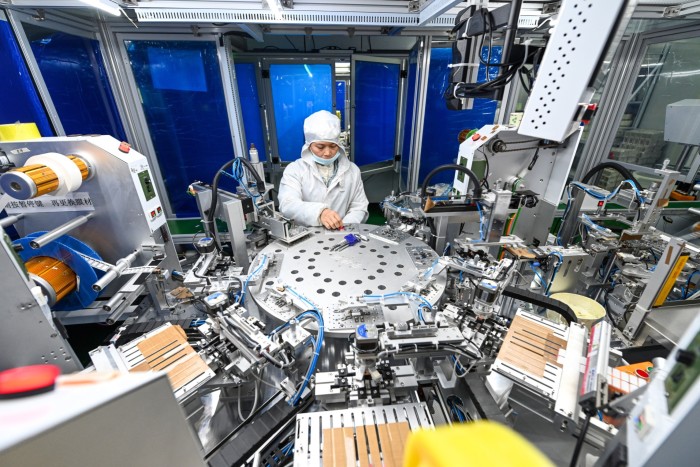
There have been few signs yet from Harris that she would take a different tack from Biden and she will be drawing from a pool of advisers who largely share the same views on China.
“She’s got quite a similar mindset on the major issues and has been part of the conversations about the big strategic moves that we’ve made,” says the US official.
Mulholland believes a Harris presidency would continue in the same direction set by Biden, because the current president’s approach has been “effective”. He adds: “You are seeing lots of money flowing into US manufacturing for the first time in generations, frankly.”
Some observers warn, however, about the risk of mission creep as national security concerns come to determine more economic policy issues. “The problem becomes if everything is a national security issue, nothing is a national security priority,” says Drezner. “When something becomes a declared national security issue, the ratchet effect is it almost never goes away.”
Matthew Goodman, a former White House official now at the Council on Foreign Relations, says it is hard to argue that Trump was an “aberration” on US trade policy. “There is a deeper trend under way in the US towards protectionism, and it will continue no matter who wins the election in November.”
American economic policy is increasingly hard to interpret, he says. “Is the goal to promote manufacturing jobs in the US, or to promote national security, or to accelerate clean energy? It’s not clear.”
Europe was initially alarmed at the Biden administration’s more aggressive industrial policy and left scrambling for answers. It has attempted to sharpen its approach, including in ways that mirror aspects of the American approach, for example levelling tariffs on Chinese electric vehicles.
Brussels has also been urging EU member states to back proposals for tougher economic safeguards against rivals including China, in areas such as the scrutiny of outbound investments and export controls on highly sensitive technology.
But member states are wary of EU intrusion into sensitive areas of national security and are heavily divided over how hard a line they should pursue against China. And whereas Brussels was once able to use its role as a regulatory standard-setter to strongly influence the global debate, some analysts expect it to struggle amid a more nationalistic era of economic policymaking.
Valdis Dombrovskis, European Commission executive vice-president, told the FT that further action would inevitably follow as the bloc responds to more “conflictual political contexts”.
“As regards security and export controls, clearly, we expect those issues to feature very prominently in the next political cycle, both in the EU and US,” he says.
Trump’s potential return is being observed with particular trepidation in Brussels, where retaliatory trade measures are already being prepared in case the former president goes ahead with threats to impose across-the-board tariffs on imports to the US. The scenario is also causing anxiety in many countries in Asia.
But there is a growing recognition that both parties have embarked on a more “America First” approach to economic policymaking.
“They couch it in pleasant wording and give us a heads-up in advance, but the Biden policies have not been much better,” says one EU diplomat. “It’s like a small sailboat going into a storm. You can tie a few things down and prepare, but it’s going to be rough.”
Additional reporting by Martin Arnold in Frankfurt, Andy Bounds in Brussels and Valentina Romei in London
Data visualisation by Janina Conboye